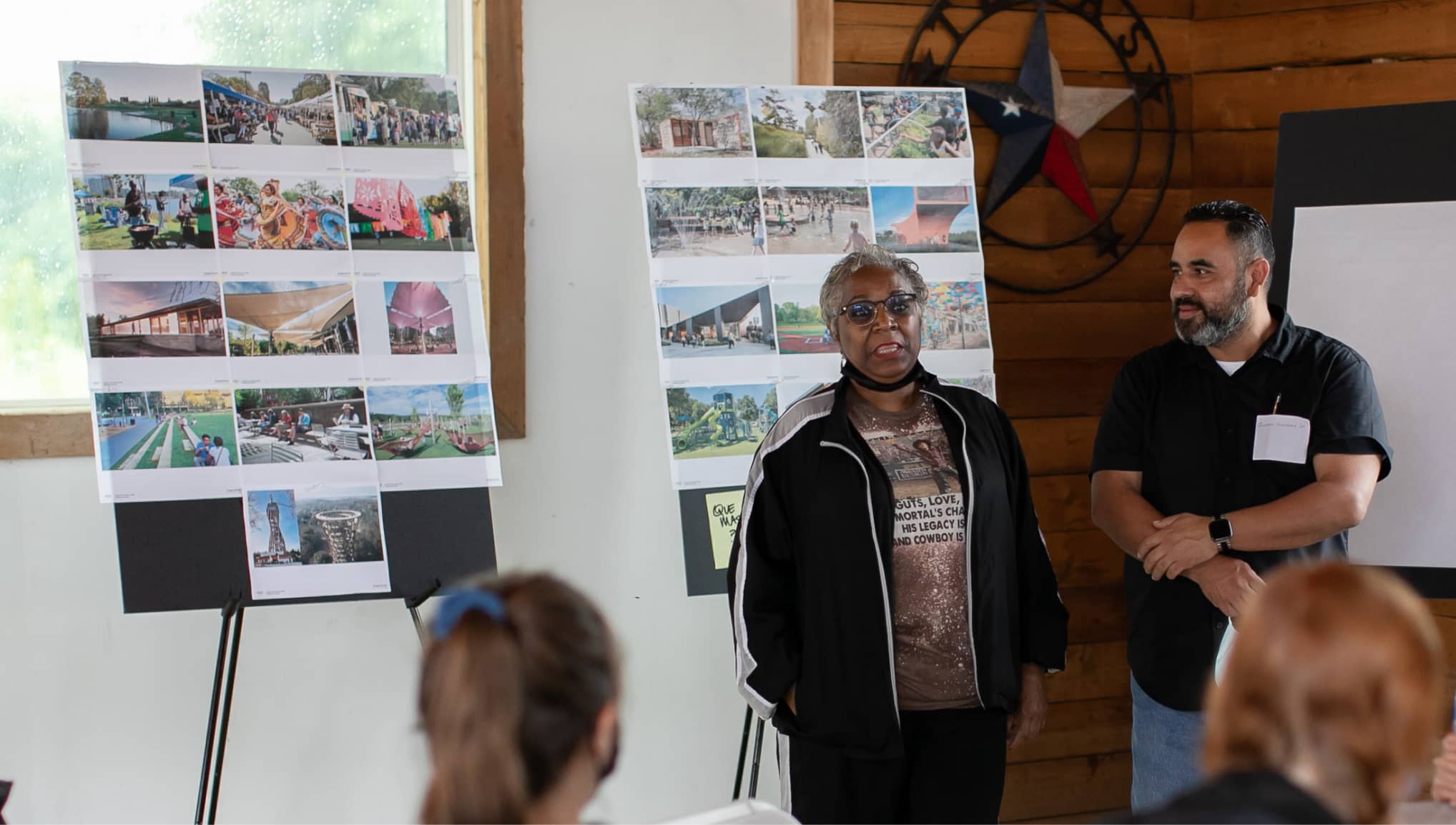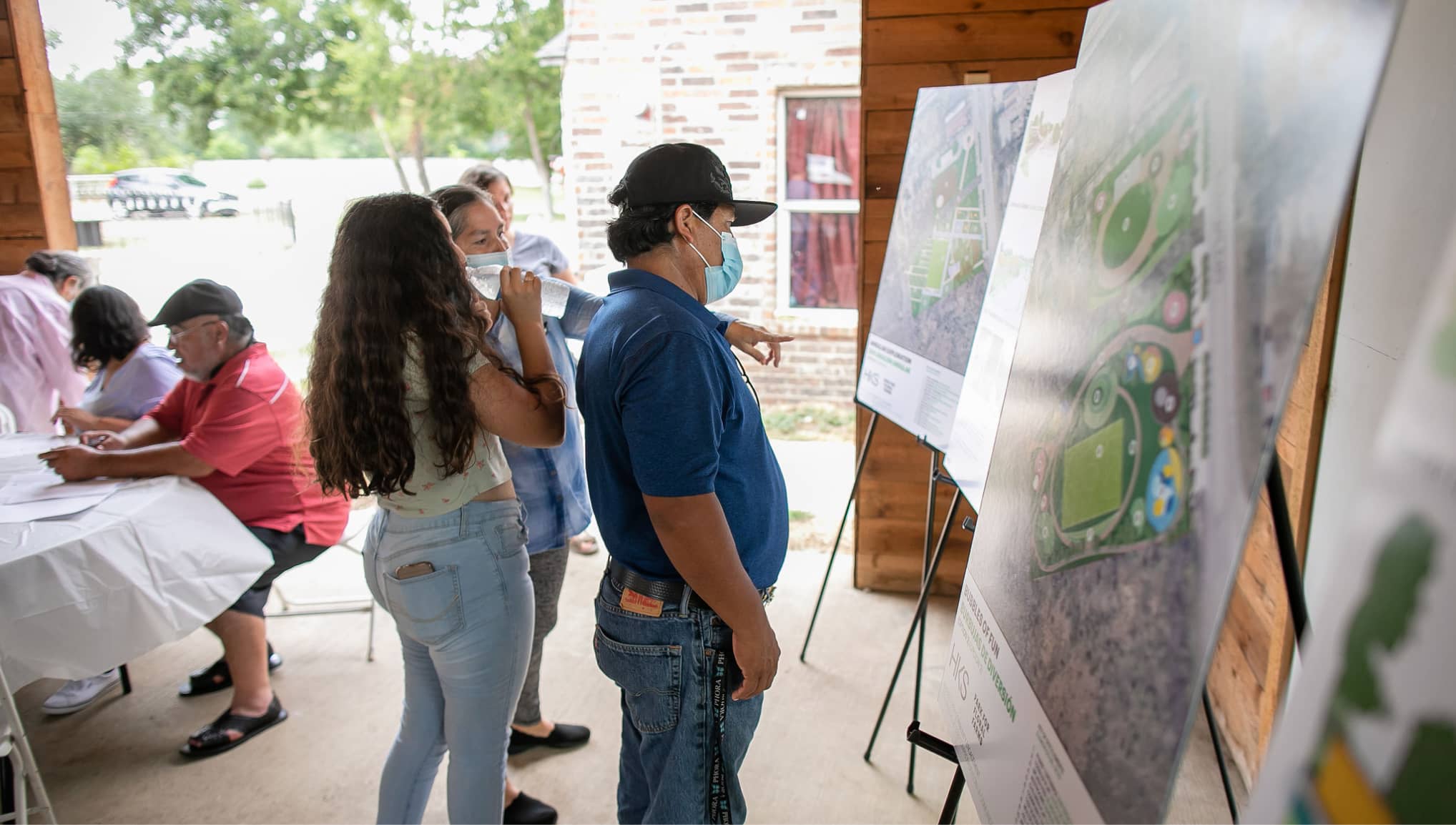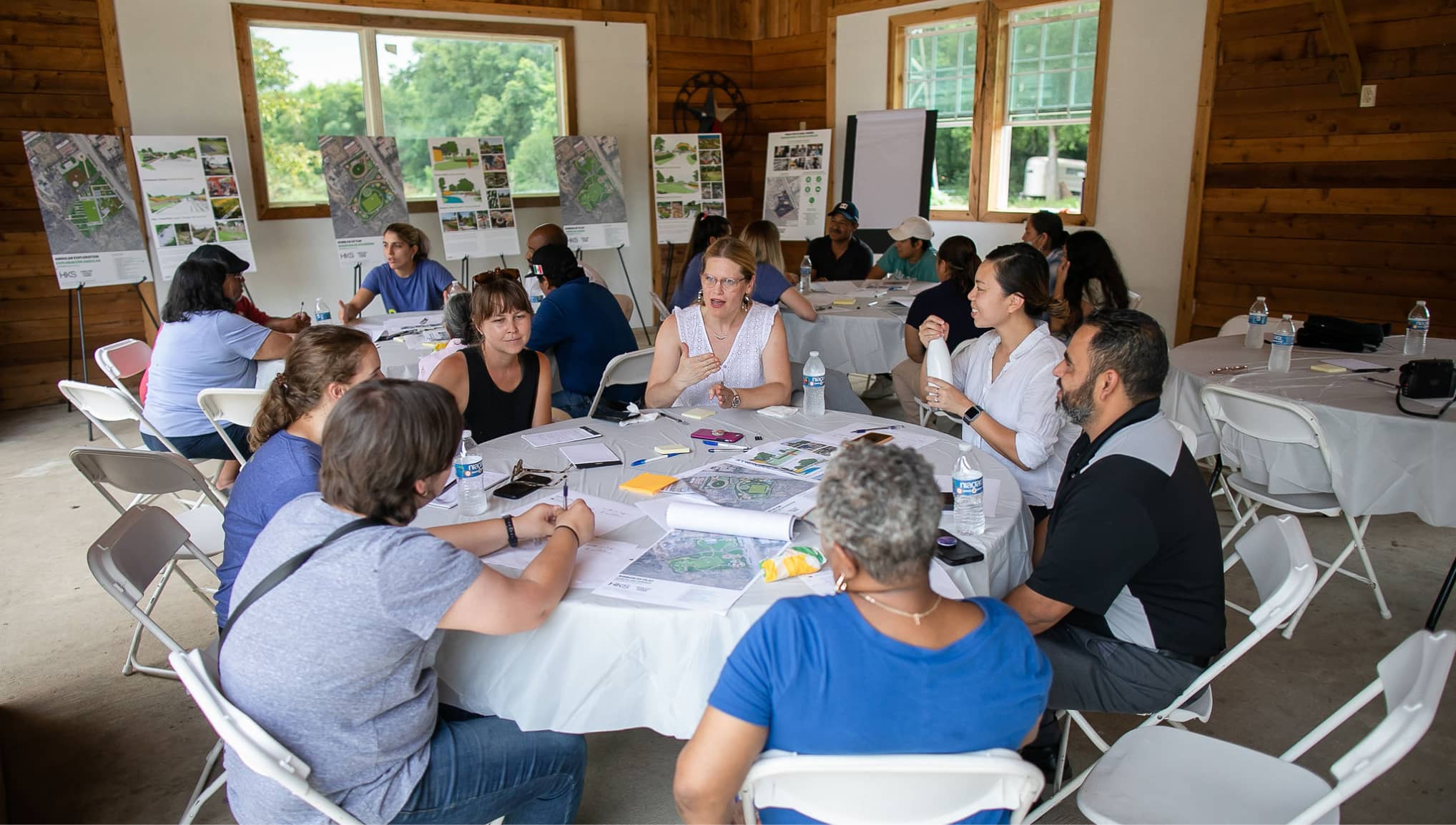
From Shingle Mountain to Floral Farms: Citizen HKS Helps Turn Southern Dallas Eyesore into Park
For nearly two years, a southern Dallas neighborhood was a dumping ground for roof shingles that piled up higher than — and often adjacent to — the houses nearby. Residents worried about the health risks that the heaps of toxic waste posed for their families. Some constantly wore masks to mitigate the effects of what became known as “Shingle Mountain,” on their lungs.
City officials cleared out the neighborhood eyesore in early 2021 and the plot of land is on track to become a new city park, thanks to a community-led effort. Residents say planting a scenic park where Shingle Mountain once stood will help them reclaim their identity as a neighborhood.
They’re partnering with HKS through the firm’s Citizen HKS initiative; local activists; the Dallas Regional Chamber; and the Dallas Stars Foundation to bring their vision to life. For HKS, the project is an example of how architects can partner with their local communities to solve their most pressing challenges through impactful design.
“As a country, we have recently been talking about infrastructure and how we can invest more in it,” HKS Architect and Design Researcher Erin Peavey said. “I hope this project serves as an example of environmental justice and what it means to invest in communities that have been overlooked in the past.”
I hope this project serves as an example of environmental justice and what it means to invest in communities that have been overlooked in the past.
From Environmental Injustice to Activism
Before it became known as the home of Shingle Mountain, this neighborhood just outside Dallas’ Great Trinity River Forest was known as Floral Farms for its proximity to nurseries in the area.
Floral Farms is one of few agriculturally oriented neighborhoods in Dallas. Barns dot the backyards. Horses, goat, sheep and chickens roam the front yards. And many of the neighbors have known each other for generations.
The notorious shingles started appearing next to longtime resident Marsha Jackson’s bedroom in January 2018 after a recycling company moved into the land solely for the purpose of piling and grinding shingles there. In a matter of months, the pile grew into 70,000 tons of shingles towering above Jackson’s single-story home. Shingle dust coming through the family’s air vent gave Jackson headaches. Other neighbors started having issues breathing and were diagnosed with asthma.
“I needed to look out for my family and neighbors. It wasn’t right for us to be suffering down there,” said Jackson, a retired AT&T manager who now works at Dallas Area Rapid Transit. “Our community deserves just as much as any other community.”

Calls to the city didn’t solve the problem so Jackson went to a meeting in a different neighborhood experiencing similar issues to find help for her neighbors. She soon got in touch with Evelyn Mayo of Downwinders at Risk, a clean air advocacy organization in North Texas.
Mayo said she was dumbfounded when she first saw Shingle Mountain, which she described as an “egregious” sight that needed to be addressed immediately because of the health risks it posed for residents.
The Dallas Morning News broke the Shingle Mountain story in December 2018, drawing local and national attention that pushed city officials to clear out the dump and acquire the land where it stood. The movement has evolved into a bilingual partnership between residents, grassroots organizations like Downwinders at Risk and the Inclusive Communities Project, Friendship West Baptist Church and local businesses. The next step, residents say, is to build a big and beautiful park for their families and other Dallas residents to enjoy.
Righting a Wrong
Former HKS Senior Urban Designer Vince Tam heard of Shingle Mountain while teaching a class on how to visualize planning through multimedia techniques at the University of Texas at Arlington. Mayo, who was taking Tam’s class at the time, reached out for guidance on how to develop the park; Tam brought Citizen HKS, the firm’s social impact program, on board to collaborate with the neighborhood’s residents and design a park for them.
HKS donates 1 percent of its billable time each year to public interest design work through Citizen HKS. That means the Floral Farms residents will not need to pay HKS to design their park.

The team meets every week to brainstorm potential concepts for the park, taking into consideration what the community has expressed a desire for during past meetings. The designers come from a variety of disciplines and experience levels, ranging from senior leaders to newer employees who have been at HKS less than two years. Tam no longer works at HKS but continues to volunteer her time for the project because she is passionate about it.
The HKS members and community organizers don’t refer to the park project as Shingle Mountain; they call it Floral Farms, as a symbol of hope and change.
“This is about grace, optimism and respect – it’s restorative justice for the community,” said Mayo, who works closely with Jennifer Rangel of the Inclusive Communities Project to keep community members engaged in the project.
This is about grace, optimism and respect – it’s restorative justice for the community.
In early August, Citizen HKS presented three concepts at a community meeting held in both English and Spanish to get feedback from residents before coming up with a single plan.
Jackson and her neighbors eagerly took notes on each concept and shared their feedback in small groups, thinking through how the park will be used by different segments of their neighborhood from young children to older adults. They say they appreciate being involved at each juncture of the process, instead of only being looped in for a final concept.

“It’s just amazing that the HKS designers have taken their time to collaborate with us and listen to how we can work together,” Jackson said. “They listened to the community first, and then they went to work on their designs.”
On the table: a soccer field, equine therapy center, play areas for young children, places of respite for parents, plaques commemorating the history of the park, and more. Many of the residents own horses and were thrilled by the possibility of sharing their love of animals with the greater community through an equine therapy center.
“I have been so inspired by how much joy in work is possible through creating strong equal partnerships with community organizations, activists and members,” said Peavey, who serves as HKS’ liaison for the project. “Hearing directly from the voices of the community, I’ve loved getting to hear their wisdom and incorporating it into our ideas.”
HKS Design Professional Carolina Almeida said she enjoys working on a project outside her usual Commercial-Mixed Use projects and collaborating with HKS employees she would not otherwise get to work with. As an Argentinian native, she also has helped translate for the Spanish-speaking residents during brainstorming sessions – which helps bring them into the decision-making process.
“This is a beautiful project that will make the community better and recognized, and it’s something that marginalized communities really need,” Almeida said. “This is also something that can be translated to other communities, here in Dallas and in other cities in the U.S.”
High levels of lead remain at the former Shingle Mountain site and residents are waiting on the city to remediate the land so construction can begin on their much-awaited park. They’re also hoping the city will acquire a neighboring two-acre parcel of land, which would open the door for an even larger park for Floral Farms.

Meanwhile, the HKS team is developing a two-phased design for the area: Phase 1 will be a four-acre park and Phase 2 will incorporate two additional acres with additional features to form a larger park. And the residents are working to get more local businesses and community organizations on board so they can raise funds for the park’s construction later on.
Jackson is used to telling her younger grandkids not to come over to her house because of the poor air quality in the neighborhood. Now she’s looking forward to the day she will be able to stroll over to the luscious green park to make new memories in the neighborhood with her family.
“We’re just all excited,” she said. “We’re so excited for people to come out and help us after being turned down so much and not getting as much support in the past. I don’t have the words to express those feelings.”
Photography by Shirley Che
